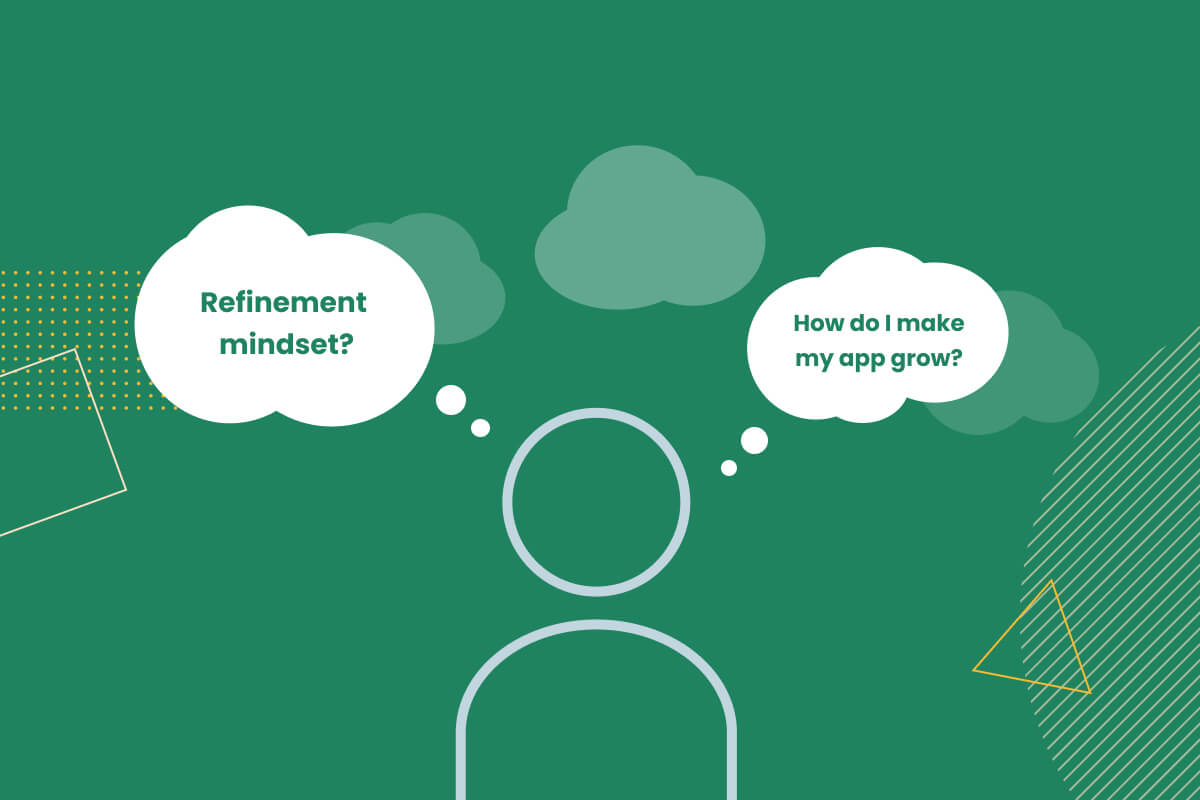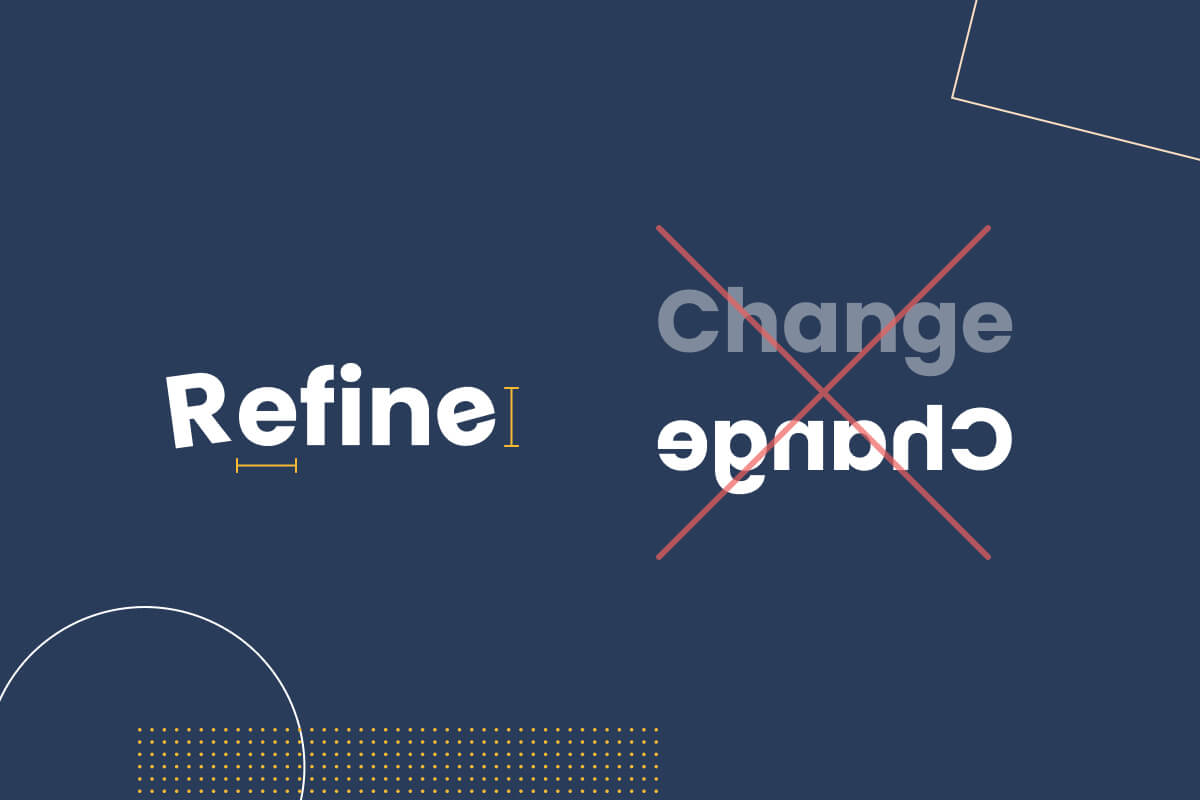How To Improve An App? Refine, Refine, Refine!
UI/UX Design
App Development

Area: Refinement Wondering how to improve an app once it’s live? Here are our thoughts on the importance of refinement and why an app should never be labelled ‘done.’ Adopt an iterative approach and you’ll have an app that stays ahead of competitors, cuts out bugs and keeps users engaged.
Why updates are essential

App development is a young industry – but an incredibly popular one. When the iOS store launched in 2008, there were only 500 apps available on the platform. In 2022, there are over seven million apps across iOS and Android. An estimated 6 billion people use smartphones, giving developers unprecedented access to global audiences. This popularity has not slipped past the commercial one, with businesses of all shapes and sizes trying their hands at apps. While some such as Airbnb and Snapchat have become household names, others have famously bombed out of existence – taking the team behind it with them (Vine, anyone?). Some of the most famous app failures were down to commonly cited issues like poor research, bad execution and corporate shortsightedness. But on a higher level, all of these problems come down to one thing – a failure to adapt to customer needs. Even the biggest, most well-funded apps in the world need to make changes as users begin to interact with them. If they don’t, they are uninstalled or abandoned forever. In this fast-moving industry, there’s no such thing as too big to fail.
Why mainstream app failure matters for niche businesses
If you’re running a smaller business, you’re probably thinking that you don’t need the type of mainstream success sought by Facebook, Instagram, Snapchat and other giants – but you do need to give your end-users something they want to use. While you don’t need to do everything the ‘big’ brands do, there are still vital lessons you can’t ignore if you mean to succeed. In this blog, we’re going to look at how to make a successful app by updating and refining it as your customer base grows. We’ll discuss why improving is important, what you need to know about refinement and how you can help drive even a struggling app to commercial success by adopting a refinement mindset.
Refine, but don’t ‘change’
The first lesson we need to stress is that no app should be launched without the right user research. Doing good research means you can better position your app and its features to be of real value to users – otherwise you’re just assuming it’ll work. Once you’ve done the research, you’ll have a more obvious list of needs and you can build the app around that. This is often how apps come to life - a business spots a need and designs something that can fulfil that need. You need to do this with a refinement mindset from the start – which means creating your app ideas whilst acknowledging that they will have room to change and improve once real users begin interacting with it.

Failure to do this can mean you’re instead forced to make core changes that impact the whole purpose of the app – which will quickly infuriate users. Take, for example, the case of YikYak. The Messaging app was an enormous success for a short while, hitting a market cap of $400 million. It was designed to facilitate anonymous messaging between college students – but as its fan base grew, so too did the capacity for it to be misused. Due to its anonymity, the app became a hub of threats and abuse. YikYak was slow to respond, failing to implement any critical measures until mainstream schools and universities started to ban it. Once that dent in their user base had been made, YikYak tried to ‘bandage’ things by forcing users to create a permanent username or handle. This betrayed the central premise of the app, which was the final nail in the coffin.
Lesson to improve your app:
Build the core of your app to satisfy a clear need. Focus on features that you can improve and tweak once live - without changing the central purpose. In YikYak’s case, the team should have acknowledged the threats of anonymity and built more security from the start.
Acknowledge the competition
Commercial apps are usually niche, but you’ll still encounter competition in some form. When you do, don’t bury your head in the sand – give each competitor’s app a fair assessment and establish strengths and weaknesses. Doing so means you’ll get ideas you could add to your own app, but you may also spot areas where the competition hasn’t done well. The critical thing is to simply acknowledge that competitors exist and new ones will come onto the market as your own product grows.

Vine, the first famous short-form video app before TikTok and Instagram, was a global phenomenon. At its peak in 2014, Vine was claimed to have 200 million users. But, the 6-second video-sharing app was a victim of its own success. The team behind it failed to acknowledge the competition. Instagram, previously reserved for image sharing, launched a 15-second video feature in June 2013. Then Snapchat arrived, meaning Vine now had 2 competitors that offered a similar experience. However, they removed the time constraints and made video content far more profitable for influencers and sponsored content. Vine continued to lag behind and eventually, it died completely.
Lesson to improve your app:
You must always monitor your competitors and their features. Even if you’re the first to market, keep an eye on new launches that may copy or supersede your features. As competitors rise, continue updating your app to stay ahead.
User research remains relevant post-launch

As discussed in the past, doing the right user research before you develop an app is critical to success. However, as was the case with the taxi-hailing app, Hailo, you must also continue to perform user research as your app grows – especially if it involves new audiences. Hailo was a startup that had launched to great uptake numbers in London, attracting around 2.5 million users. Unfortunately, when they attempted to launch in New York they failed to do adequate user research. So, they missed the fact that most NY cab drivers didn’t use smartphones. Considering the app needed a smartphone to function, this spelt disaster - and Hailo abandoned its New York efforts in 2018. Soon after, Uber came along to eat up its market share, as it didn’t rely on yellow cab drivers and other ride-sharing platforms.
Lesson to improve your app:
Do your research initially – then continue to do it as your app grows. When rolling out updates to a new audience, make sure that the new audience needs the feature or function. You could even potentially create a refinement roadmap, showing your audience upcoming features and allowing them to have a say.
Aim for great, then refine to succeed.

Nick Craver, Architecture lead and developer at Stack Exchange, summed up the importance of refinement with his advice: “There is no perfect app. There is no perfect architecture. There is no perfect code. You can kill yourself by chasing any of the above. Never aim for perfection. Perfect is a never-ending long-tail or time and effort far better spent on improving other things. Aim for great.” Learning how to make a successful app isn’t about launching a ‘perfect’ product. It’s about getting the user's needs to be addressed quickly and then growing the product through continual refinement. If you continue to answer user needs, competitor activity and technical requirements/bugfixes, you’ll see your app succeed. Here's a statistic to go away with: According to Appbot, the top 200 free apps on iOS update every 18 days. At KOMODO, refinement is core to our approach. We’ll build your app from scratch, or revamp an existing one, using user research to inform the design. Once live, we don’t stop. We’ll keep growing, updating and reassessing the needs of your users to ensure your app drives commercial success.

Got an idea? Let us know.
Discover how Komodo Digital can turn your concept into reality. Contact us today to explore the possibilities and unleash the potential of your idea.

Sign up to our newsletter
Be the first to hear about our events, industry insights and what’s going on at Komodo. We promise we’ll respect your inbox and only send you stuff we’d actually read ourselves.






